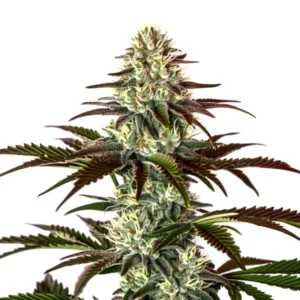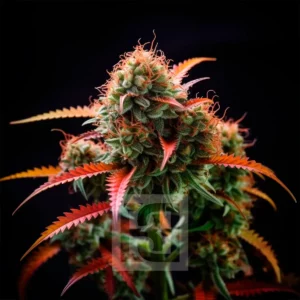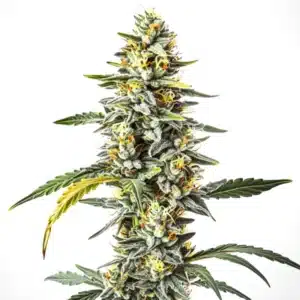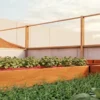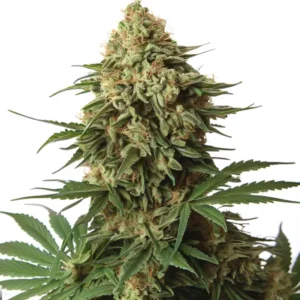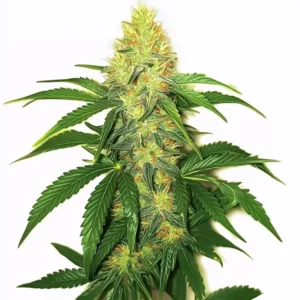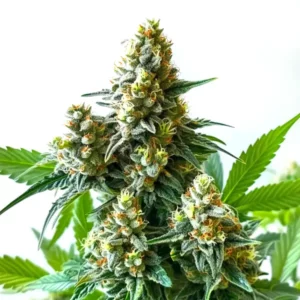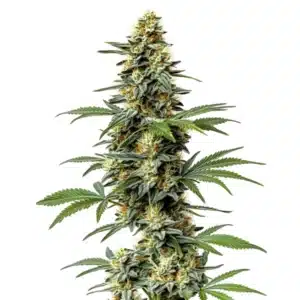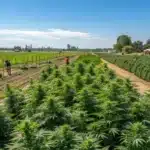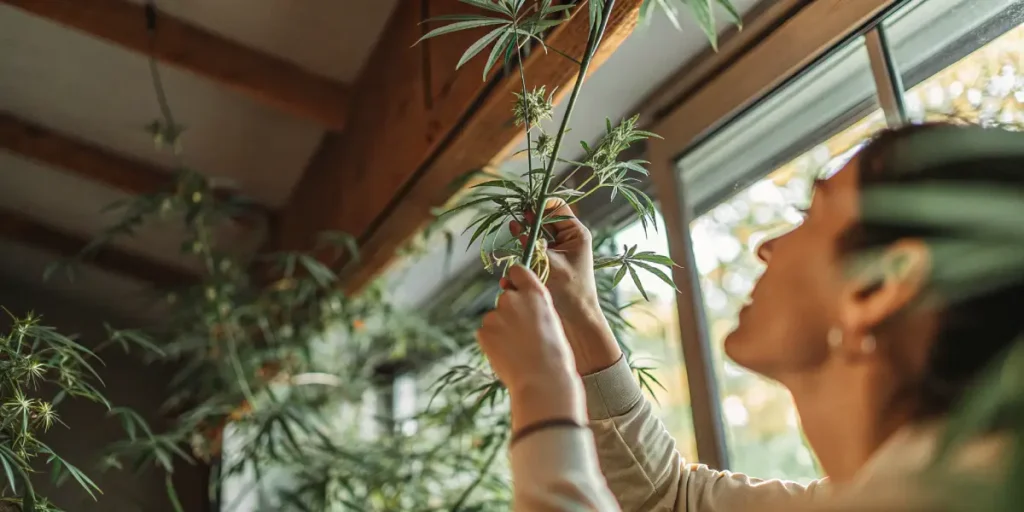
How to Train Cannabis Plants
Training cannabis plants is an essential practice for cultivators aiming to maximize yield and optimize growth. By implementing strategic methods, you can guide your plants to grow in ways that enhance their natural potential. Whether you’re a beginner or an experienced grower, applying these techniques can significantly impact your harvest.
Many growers find that learning how to train cannabis plants can be an art as much as a science. The aim is to create an ideal environment where light and air can penetrate all parts of the plant. This ensures that each bud site receives optimal resources, leading to a more bountiful harvest. The key is understanding the plant’s growth patterns and making subtle adjustments to its natural trajectory.
Recommended Strains
Gelato
|
|
THC | 27% (High) |
|
|
Type | Feminized |
|
|
Yield | High |
|
|
Phenotype | 50% Indica / 50% Sativa |
Blue Dream
|
|
THC | 17% - 24% (Medium) |
|
|
Type | Feminized |
|
|
Yield | High |
|
|
Phenotype | 50% Indica / 50% Sativa |
For those looking to invest in quality strains, Blimburn Seeds offers varieties like Gelato, Blue Dream, and Gorilla Glue 4. These strains respond well to training techniques, offering robust growth and significant yield. Incorporating these strains into your garden can be a game-changer.
Best Techniques for Training Cannabis Plants
Different methods can be used to train cannabis plants, each with its benefits. One popular technique is topping, where you cut the main stem to promote bushier growth. This encourages the plant to focus energy on several main colas, rather than one central stalk. Topping is perfect for those looking to manage height and improve yield.
Another technique is low-stress training (LST). This involves gently bending and tying down branches to encourage horizontal growth. LST helps increase light exposure and air circulation, which are crucial for healthy plant development. It’s a preferred method for those growing in small spaces or using limited light sources.
When considering the best techniques for training cannabis plants, it’s important to assess your growing environment and resources. High-stress techniques like topping can be combined with LST for enhanced results, creating a well-structured plant that’s primed for maximum yield. Experimenting with different methods will help you understand how to train cannabis plants effectively.
For growers aiming to learn how to train cannabis plants for maximum yield, patience and observation are key. Each plant will respond differently based on its genetics and environment, so keeping a close eye on progress and adjusting techniques accordingly can lead to a successful harvest. Regularly evaluate the plant’s response to your training methods to refine your approach and achieve the best results.
Promos & Deals
Low-Stress Training Methods for Cannabis
Low-stress training is a gentle approach that avoids damaging the plant while still manipulating its growth. Begin by carefully bending the main stem and tying it down with soft ties. This encourages side branches to grow upwards, creating a more even canopy.
As the plant continues to grow, adjust the ties to maintain an even canopy. This ensures that all parts of the plant receive equal light and air. Patience is key here, as LST can take time to show significant results. However, the payoff is often a more productive plant.
One of the critical advantages of low-stress training methods for cannabis is the ability to sculpt the plant’s growth without causing harm. This method is particularly beneficial for those with limited space, as it allows you to make the most of vertical space while encouraging lateral growth. Monitoring the plant’s response to the training will help you make necessary adjustments to optimize yield.
Learning how to train cannabis plants using LST can be a rewarding endeavor, especially when you see the results in a lush, even canopy. The method not only enhances yield but also promotes the development of high-quality buds. By focusing on low-stress techniques, growers can enjoy a robust and healthy plant that flourishes under optimal conditions.
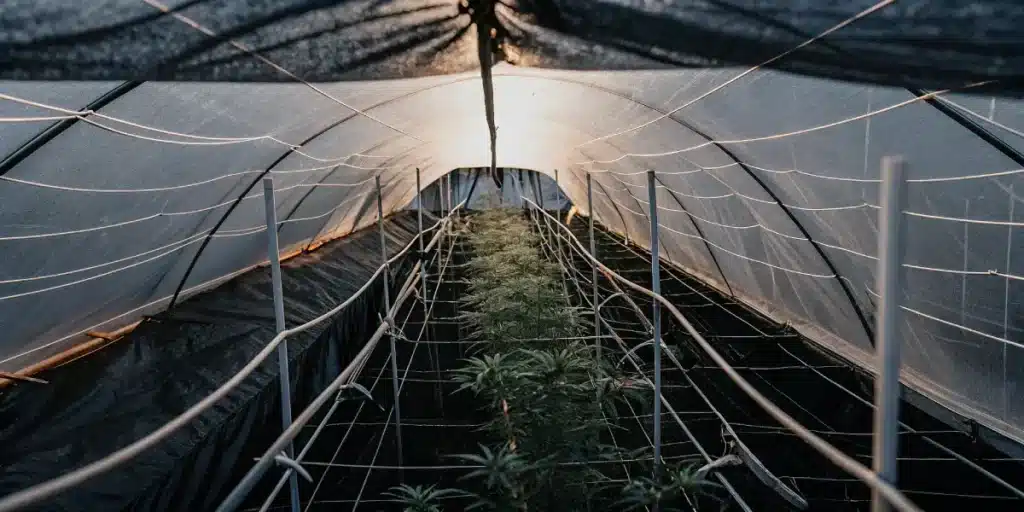
Step-by-Step Guide to Training Cannabis Plants
Starting with a healthy plant is crucial. Choose a strain with a strong growth profile, such as Gelato from Blimburn Seeds. These plants offer a great foundation for training. Begin by allowing the plant to reach a few nodes in height.
For topping, once your plant has developed 3-5 nodes, use sanitized scissors to cut above the node you wish to top. This will encourage the plant to produce two main colas. Keep the plant’s recovery time in mind to ensure it remains healthy.
When following a step-by-step guide to training cannabis plants, it’s essential to monitor the plant’s reaction to each technique. After topping, observe the plant for signs of stress or recovery, and adjust your care routine to promote healing. This attention to detail will ensure that your plant remains vigorous and continues to develop multiple bud sites.
Integrating low-stress training into your regimen can further enhance the plant’s structure. Gently manipulating branches allows light and air to reach deeper parts of the plant, fostering a thriving environment. As you become familiar with how to train cannabis plants, you’ll gain confidence in experimenting with different techniques to achieve optimal growth and yield.
Cannabis Plant Training for Beginners
If you’re new to cannabis cultivation, starting with training techniques can seem daunting. However, with a step-by-step guide, beginners can effectively learn how to train cannabis plants. Start with simple techniques and gradually progress to more complex methods as you gain confidence.
Patience is crucial. Training takes time and practice, but the results are worth it. Start with low-stress training methods, which are gentle and easy to apply. This will help you get comfortable with manipulating plant growth without causing harm.
Cannabis plant training for beginners should emphasize fundamental techniques that are easy to implement and understand. Begin with LST, as it provides a gentle introduction to training without overwhelming new growers. As you gain experience, explore additional methods to enhance your skills and improve your plants’ yield.
Knowing how to train cannabis plants involves observing and learning from your plants’ responses. By starting with basic methods and gradually incorporating more advanced techniques, beginners can develop a comprehensive understanding of cannabis cultivation, enabling them to maximize their plants’ potential over time.
Maximizing Yield with Cannabis Plant Training
Achieving maximum yield requires attention to detail and consistency in training techniques. Regularly monitor plant growth and adjust training methods as needed. This may involve re-tying branches or topping additional nodes to promote further branching.
Combining multiple methods can enhance results. For instance, topping can be used alongside LST to create a bushier plant with multiple colas. This combination ensures a dense canopy, allowing light to reach all bud sites effectively.
Maximizing yield with cannabis plant training involves a holistic approach that considers every aspect of plant growth. By understanding the plant’s natural tendencies and adjusting training techniques to complement these patterns, growers can achieve a substantial increase in both yield and quality. Consistent observation and timely adjustments are key to success.
To fully realize how to train cannabis plants for maximum yield, it’s important to maintain a well-balanced environment. This includes ensuring adequate light, nutrients, and airflow, all of which contribute to the plant’s ability to thrive. By integrating these factors with effective training methods, cultivators can achieve remarkable results.
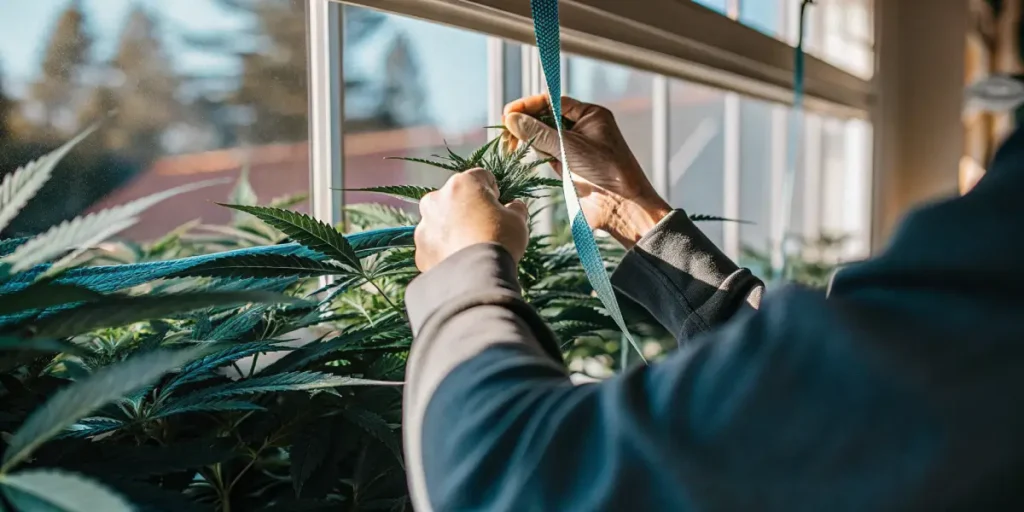
FAQs
What is the best time to start training cannabis plants?
The ideal time to begin training your cannabis plants is during the vegetative stage. This phase is when the plant is actively growing and can recover quickly from any stress caused by training techniques. Starting early ensures the plant develops the desired shape and structure throughout its growth cycle.
For beginners, it’s important to monitor the plant’s health closely. Look for signs of stress, such as drooping leaves or discoloration, and adjust your training techniques accordingly. Early intervention can prevent long-term issues and ensure a successful harvest.
Knowing the best time to start training cannabis plants sets the foundation for a successful cultivation journey. Initiating training during the vegetative stage allows the plant to adapt and respond to various techniques without undue stress, ensuring robust growth and development.
Monitoring the plant’s response to training during this critical stage ensures that you can intervene promptly if any issues arise. By paying close attention to the plant’s needs, you can make adjustments that support healthy growth and maximize yield potential.
How does low-stress training impact plant yield?
Low-stress training (LST) significantly impacts plant yield by optimizing light exposure and air circulation. By carefully bending and securing branches, growers can create an even canopy that allows light to penetrate all parts of the plant. This method encourages the development of more bud sites, leading to a larger yield.
Many growers find that LST not only increases yield but also improves the overall quality of the buds. By reducing the plant’s height and spreading its branches, you ensure that all buds receive the necessary nutrients and light, resulting in a more potent and flavorful harvest.
Incorporating low-stress training methods for cannabis can lead to transformative results in terms of both yield and quality. By enhancing the plant’s ability to absorb light and nutrients, LST promotes vigorous growth and the production of dense, resinous buds, elevating the overall cultivation experience.
By learning how to train cannabis plants with LST, growers can achieve a harmonious balance between growth and stress, fostering an environment where the plant can thrive. This method is particularly advantageous for cultivators aiming to optimize plant health and maximize harvest output without compromising quality.
Can topping and LST be combined for better results?
Yes, combining topping and low-stress training (LST) can produce impressive results. Topping involves cutting the main stem to promote the growth of multiple colas, while LST manipulates the branches to grow horizontally. Together, these methods create a bushier plant with an even canopy.
This combination maximizes light exposure and improves air circulation, leading to higher yields. It’s a preferred approach for experienced growers seeking to push the limits of their plants’ potential. However, beginners can also experiment with this combination to learn how to train cannabis plants effectively.
Knowing how to train cannabis plants by combining topping and LST can unlock new levels of plant potential. This synergistic approach enhances the plant’s overall structure, enabling it to capture more light and produce an abundance of high-quality buds, making it a favorite among seasoned cultivators.
For those new to cannabis cultivation, experimenting with both methods can provide valuable insights into the plant’s growth dynamics. By learning to balance topping and LST, growers can develop a comprehensive skill set that maximizes yield and fosters robust plant health.
What are some common mistakes to avoid when training cannabis plants?
One common mistake is applying too much stress to the plant, especially with high-stress techniques like topping or super cropping. It’s important to allow the plant time to recover between training sessions to avoid stunting growth or causing harm.
Another mistake is neglecting regular maintenance. Training is not a one-time event but an ongoing process. Regularly check and adjust ties, monitor plant health, and ensure that the plant is receiving adequate light and nutrients. Consistent care is key to successful cannabis plant training.
When learning how to train cannabis plants, avoiding common pitfalls is essential for achieving optimal results. Overzealous training can lead to plant stress and reduced growth, so it’s crucial to approach each technique with care and patience, allowing the plant time to adjust and recover.
Regularly assessing the plant’s progress and making necessary adjustments will prevent setbacks and ensure continued growth. By maintaining a vigilant approach to plant care and training, cultivators can develop a thriving garden that consistently delivers impressive yields.
Which cannabis strains are best suited for training techniques?
Some strains are naturally more responsive to training techniques due to their growth patterns and resilience. Strains like Gelato, Blue Dream, and Gorilla Glue 4 from Blimburn Seeds are excellent choices. These strains are known for their robust growth and adaptability, making them ideal for various training methods.
When selecting a strain, consider your growing environment and personal goals. Indica-dominant strains often respond well to training due to their bushy nature, while sativa-dominant strains may require more attention to manage their height. Researching and choosing the right strain can greatly enhance your training success.
Choosing the right cannabis strain is a pivotal step in how to train cannabis plants successfully. Each strain has unique characteristics that influence its response to training techniques, so selecting a variety that aligns with your cultivation goals can make a significant difference in outcomes.
Familiarizing yourself with different strains and their growth habits will enable you to tailor your training methods to suit each plant’s needs. By understanding which strains thrive under specific conditions, you can achieve a more efficient and fruitful cultivation process.




